by Winding Pathways | Jul 13, 2023 | Gazette Features, Travel/Columns
What is a Pilgrimage?
From: University of York: “‘Pilgrim’ and ‘pilgrimage’ are words that have carried a range of meanings over the centuries.
“The English term ‘pilgrim’ originally comes from the Latin word peregrinus (per, through + ager, field, country, land), which means a foreigner, a stranger, someone on a journey,…. It can describe a traveller making a brief journey to a particular place….”
Our Context
We consider travel a “pilgrimage.” The destination is not the sole purpose. We enrich our souls by being open to amazing travel surprises. Here are some we discovered on recent trips to New Jersey and Saskatchewan, Canada.
Interstate Highways are outstanding for getting places quickly, but we consider them a boring slog that bypasses fascinating places. Too many people focus on getting to a destination and miss intriguing sites along the way. In contrast, we often scan maps and brochures and, from time to time, duck off Interstates to drive on somewhat parallel, smaller roads stopping in towns bypassed by the interstates.
Two trips from this summer that highlight this concept come to mind. We’ve featured the Hopewell Earthworks around Chillicothe, OH, and took in great southern BBQ at Old Canal Smokehouse. The server presented us with an enormous slice of peanut butter pie and regaled us with tales of his childhood exploring the steep mounds and snaking earthworks while four of us made quick work of the dessert.
Easterly
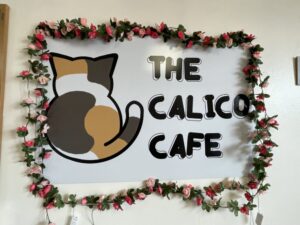
An unusual cafe.
On our return from the East Coast, we needed a respite from the truck traffic and fast driving of I-80, so we exited and drove through Brookville, PA. Seeking coffee, we discovered the Calico Cafe. While ordering we asked the barista where the restrooms were. She responded, “You’ll find them through the cat room behind me.” Cat room!!!!! Well, we opened the door to find people petting cats. It was a place for them to get their cat fix. We’re not cat people but the experience was different……something that can’t be found in chain eateries along Interstate exits. And the coffee was decent.
Westerly
On a more recent drive to Saskatchewan, Canada, we were cruising north on Interstate 29 in North Dakota and spotted a tiny note on the map showing the location of North America’s tallest structure. It was along a small paved road that headed in the direction we wanted to go, so we exited, made a few turns, and saw, not a massive skyscraper, but a 2063-foot-tall television tower. To stabilize the tower, guy wires extended scores of yards out. Not terribly exciting but a sight we’d have missed had we stayed on the interstate. And it has a history.
Just north of the tower we passed through the small town of Mayville, North Dakota, and discovered a gem of a college called Mayville State University. With 80+ majors/minors, a student/faculty ratio of 14:1, and reasonable tuition, MSU would be a good bet for a solid education and a bright, “no-debt” future. Only a few miles north we tented overnight in Turtle River State Park. Songbirds serenaded us in the evening and greeted us in the early morning.
Medicine Wheel and College Towns
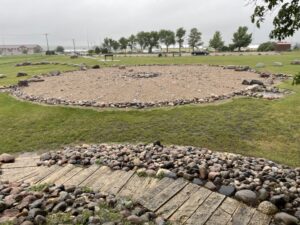
Glacial boulders align to the rising and setting sun and moon.
On our return trip we were eastbound on Interstate 94. We’d picked up a brochure at a North Dakota welcome station about the Medicine Wheel Park in Valley City, a town between Bismarck and Fargo. Even though it was raining we exited, donned raincoats, and walked around a fascinating and well-maintained medicine wheel almost adjacent to the big road. The structure, inspired by the Big Horn Medicine Wheel, marks the rises and sets of the sun and moon in relation to the Earth. Then we drove through Valley City State University before jumping back on the big road. VCSU has an interactive financial program with surrounding states and two Canadian provinces. Recreational opportunities abound.
Our western trip passed the geographic center of North America in Rugby, ND, (watch the video! It’s rather fun!), and a Continental Divide (Laurentian) between water flowing to Hudson Bay and that flowing to the Gulf of Mexico. Actually, a map reveals several watershed divides in the Americas.
Most travelers would have buzzed by these interesting stops. Curiosity grips us and leads us to unusual places we’d usually never heard of. We are richer for this.
Great Plains Colleges
Our son, Daniel, graduated from a college few people have ever heard of – Black Hills State University in Spearfish, South Dakota. It was an outstanding educational experience for him. And, tuition and living expenses were modest. He graduated debt free.
We’ve explored other colleges in small Great Plains towns, sometimes to have coffee in their student center, and to learn about them. Many, like Black Hills State, are little known, offer outstanding education, and are inexpensive. They offer students the chance to earn a college degree without debt.
Here are a few we’ve visited:
Black Hills State, Spearfish, South Dakota.
Valley City State University, Valley City, North Dakota
Mayville State University, Mayville, ND
Wayne State University, Wayne, Nebraska
Know someone considering college? One of these rather obscure but top-notch schools might be a perfect match……and there are many more we’ve yet to visit.
by Winding Pathways | Jun 29, 2023 | Gazette Features, Travel/Columns, Wonderment
HOW?
Ancient people accomplished what seems impossible. How did they do it?
We recently toured the Earthmoving Legacy Center near Elkader, Iowa. On display were diesel and gasoline-powered machines able to move massive quantities of dirt for today’s needs. (Moving Heaven and Earth)
A month later we stood in a field near Chillicothe, Ohio, gazing at an enormous earth mound. The next day we visited other nearby sites with earthen walls, circles, and squares. All were separated by many miles and were large – some spanning hundreds of feet long and dozens of stories high. All were made around 2000 years ago by people of the Hopewell Culture. We learned that the squares are identical and fit inside the large circles. Somehow, they did this hard work without machines. No metal shovels. Not even wheelbarrows. How did they do it?
-
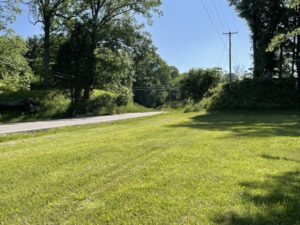
-
Modern intersecting with ancient.
-
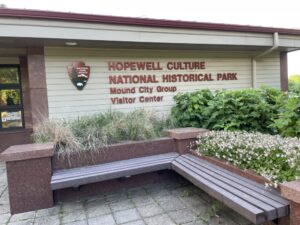
-
Headquarters.
Can a Principle of Geology Lend Insights?
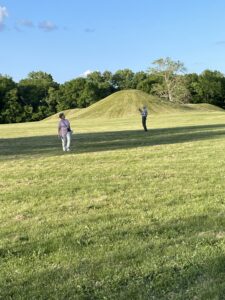
Recreated Earthworks
Hopewell, like visits to Effigy Mounds National Monument in Iowa and Cahokia in Illinois, stimulates more questions than answers. Perhaps a tenet of Geology can guide us. The Present is the Key to the Past. So, let’s consider. Why do we build structures? How do we move earth today? What do people who build need to sustain them while they build? (Food, shelter, clothing) Who provides this? Where do we get our goods? Perhaps these questions can provide insight into the past.
History is Written by the “Victors”
In our 1950s and 1960s school classes, we learned that European explorers and early settlers discovered scattered bands of Native Americans making a primitive living hunting, gathering, and gardening. No mention was made of our continent’s once vast population of sophisticated, technologically-advanced, and organized Native Americans who built magnificent structures and had an extensive trade system. Some of us did learn about the impressive Mayan and Aztec cultures in Mesoamerica.
Amazing Commerce
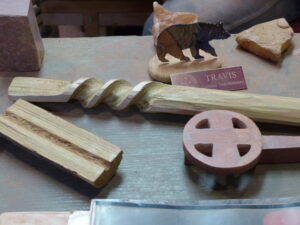
Pipestone was traded far and wide.
Little did we learn about the varied North American indigenous cultures that were far superior than originally believed. For example, Hopewell people made tools of obsidian that originated at Yellowstone, created jewelry of copper from the upper Great Lakes region, and used shells from the Gulf of Mexico. They somehow got these distantly sourced goods without airplanes, trucks, or Amazon Prime! Somehow goods moved across thousands of miles before horses and even wheels were available.
Sources of Information
Archeologists have solved some riddles about how ancient people did things, but many mysteries remain. Puzzling and fascinating. We have had published a number of pieces on ancients including the desert Southwest, to Pipestone in Minnesota, to Mounds along the Mississippi from Effigy to Cahokia.
Together, let us learn more about the rich heritage that is both before, beneath us, and behind us. A good source of information is The Great Courses offerings by Dr. Edwin Barnhart, Ancient Civilizations of North America, and Dr. Daniel Cobb, Native Peoples of North America.
by Winding Pathways | May 18, 2023 | Travel/Columns
Winding Pathways has been busy the past several years with features for the Cedar Rapids Gazette. Below are features from the past two years. I will post links to the other features in the Gazette from the past.
2023 to date
April 2, 2023. Agritourism Attraction. (Fair Oaks Farms)
March 5, 2023. Seeking Independence. (Truman Presidential Library)
February 3, 2023. A Gem in Pennsylvania’s Laurel Highlands.
January 6, 2023. Ike’s Town. Abilene, Kansas & Western History.
2022
December 4, 2022. Trap Shooting.
September 6, 2022. Riding the Rails (Alaska by Train)
July 17, 2022. Backyard Adventures. (No link to date)
July 11, 2022. Casper, WY, Gateway to the West.
May 12, 2022. Hobo Convention.
May 8, 2022. Splish Splash! Whitewater Kayaking in Iowa. (No link to date)
April 22, 2022. Finding America On Roadways East.
April 13, 2022. Muscle Over motor When Boating.
March 21, 2022. Rockhounding.
January 30, 2022. Backpacking Bonus. (8B of GZ. No link to date) Available Green Gazette.
January 24, 2022. Distinctive Religious Structures.
January 16, 2022. Hiking Wild Areas. (no link to date) Available Green Gazette.
2021 balance of the year
The first part of the year click here
December 2021. Country Schools. (no link to date) Available Green Gazette
November 15, 2021. Making a (Mini) Pitch for Soccer.
October 6, 2021. A visit with Midwest’s Pioneering Authors.
September 8, 2021. Taking a Slow Boat to Cassville.
September 6, 2021. Camping in Iowa’s Trout Country & Decorah’s Celebrities.
August 4, 2021. Parking While Headed East. And Solar Panels at Peoples.
June 13, 2021. Alaska Recreation.
May 22, 2021. Museums of Quad Cities Area. https://www.thegazette.com/recreation/the-many-museums-of-the-quad-cities/
2020 Gazette Features
Although readers have to be subscribers to the GZ, non-subscribers to the GZ can browse the list and catch up on what we write about. Some content on Facebook also.
by Winding Pathways | May 4, 2023 | (Sub)Urban Homesteading, Travel/Columns
For nearly a decade we have been posting Winding Pathways Blogs mostly about various items of nature, especially those encountered in yards and around homes. Topics appear seasonally and we can usually find a new “spin” to keep blogs fresh. We have a large inventory of free information on our website, Winding Pathways.
Branching Out
But, change is good, so we decided to shift the focus somewhat and branch out. We will incorporate aspects of our travels, especially those with a nature focus. We will encourage readers to look at familiar and unique places with new eyes. We might address issues and topics of broader interest.
Perhaps a look at the emotional and experiential aspects of yards, nature, and exploring our world. There is always something new to discover and consider both around homes and farther afield.
Stick with us and consider occasionally sharing your experiences, too. As editors, we weave these in as they fit our needs.
-
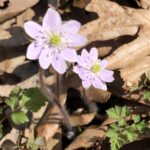
-
Early spring flowers
-
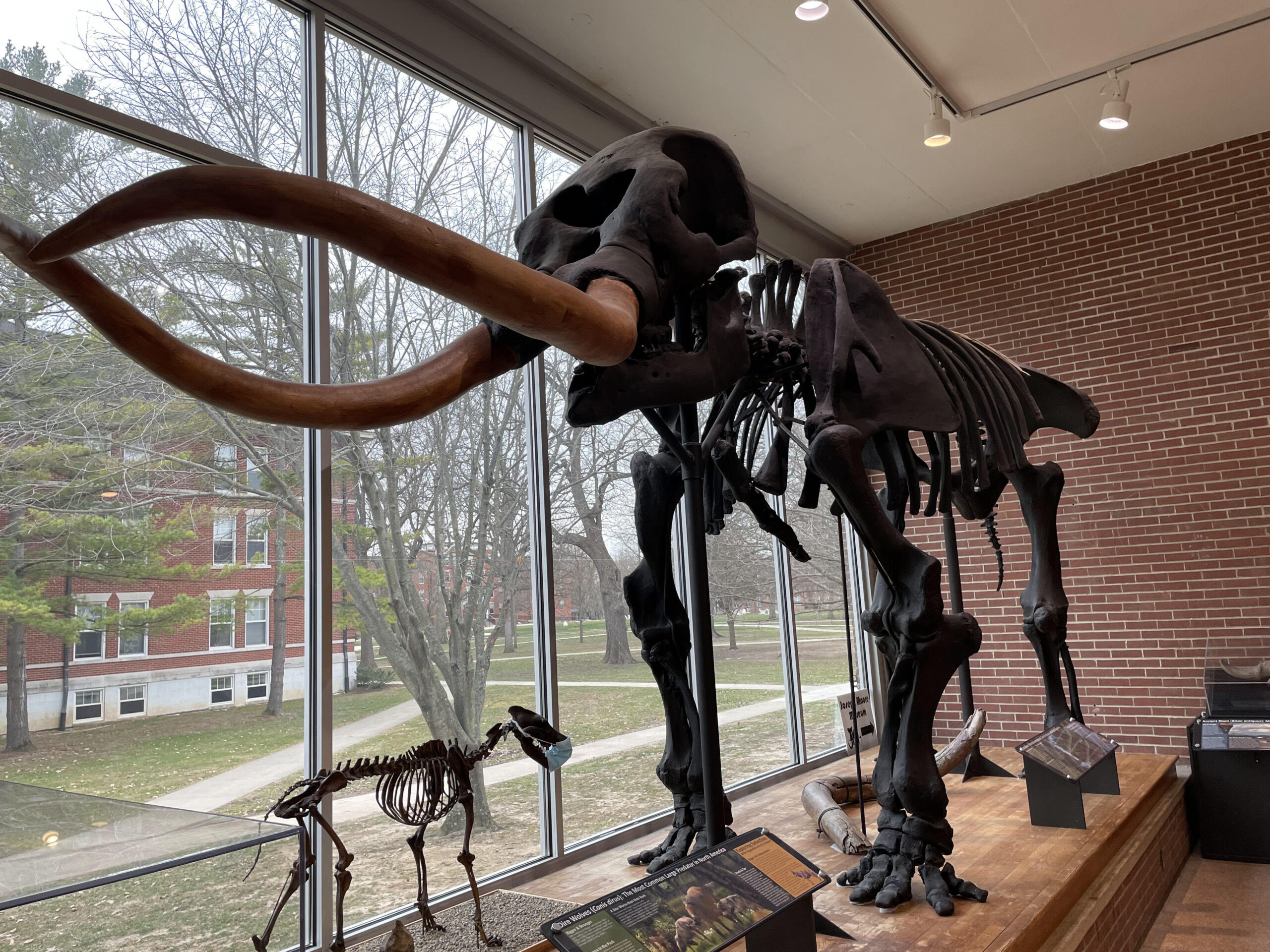
-
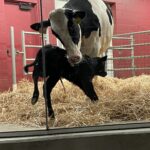
-
Wobbly legs
by Winding Pathways | Mar 30, 2023 | (Sub)Urban Homesteading, Travel/Columns
We Bring Along Backpacker Meals*
We don’t do wilderness backpacking anymore but we are never far from backpacker meals at home and when we travel.
Last May we drove to Casper, Wyoming, with plans to set our tent up at Nebraska’s Smith Falls State Park the first night and the Forest Service’s Toadstool Campground the next. Normally, we’re camping softies. After setting our tent up we choose to go to a nearby town and enjoy a restaurant meal. That didn’t work in Nebraska.
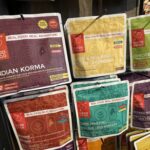
Try some tasty meals.
After arriving at Smith Falls Park, we set up camp and walked to the surprisingly tall waterfall. Gorgeous! Worth a visit. Then, it was dinner time and we were hungry. But no town or restaurant was within miles and we’d already spent too much time in the car that day. So, we pulled our GoodTo-Go backpacker meal bin out of the car.
Our small bin contains these things:
- A few backpacker dehydrated meals that keep well. We also use Right On Trek.
- A tiny backpacker stove and fuel bottle – and matches!
- A bottle of water and a small pot.
- Utensils and bowls.
Within minutes we had our Pocket Rocket stove beneath a pot of boiling water. Soon our dehydrated meal was ready to eat. It hit the spot, cleanup was easy, and we had enough time before darkness for a birding walk.
-
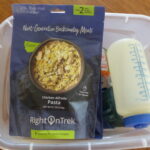
-
A small bin holds all we need.
-

-
Items on display
Dehydrated Meals
Many types of dehydrated meals came on the market decades ago. They were OK and fine for hungry, backwoods backpackers but hardly delicious. That’s changed. Today several companies make meals that are easy to prepare with simple camp equipment and are nutritious and quite delicious. Although marketed for backpackers they are perfect for keeping in the car in case there’s no cafe nearby. They’re also outstanding to keep in a basement emergency bin in case a storm knocks out power.
Camp Stoves
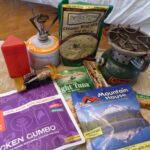
Note the size difference in equipment
Like dehydrated meals, camp stoves have evolved from heavy cumbersome pump-up models of years ago to lightweight compact, and effective backpacking stoves. Ours is called a Pocked Rocket made by MSR. It takes up only a tiny space in our bin and boils water quickly. A fuel bottle lasts for several meals. No pumping is required. Remember matches if the stove lacks an igniter.
Other Things
During COVID-19 we ended up with many disposable knife/fork/spoon sets wrapped in paper napkins packed along with carryout meals. We put unused utensil kits in our meal bin along with a couple of bowls.
When we travel, even to visit friends or relatives knowing we will stay with them, we always stow our backpacker meal bin in the car. Usually, we don’t need it. We eat with friends or a cafe is close to the campground. However, like what happened at Smith Falls, having simple-to-cook meals and a micro stove makes the difference between enjoying a pleasant meal or going to bed hungry.
* Winding Pathways remarks are our own. We make non-paid, independent evaluations unless otherwise noted.
by Winding Pathways | Mar 2, 2023 | Nature, Travel/Columns
What Do You Need to Know About Winter Travel?
Guest Bloggers, Nancy Sauerman and Bruce Bachmann
I have gone to conferences in the winter but that involves flights, motels, and schedules arranged by someone else. I have had my share of winter travel within the state for short visits or to care for relatives. During our working years, we took our vacations after school semesters ended and before summer class teaching started. After retirement, we still took vacations in the spring or fall — before and after major gardening and food-preserving time and pre/postseason.
Finally, we took a winter travel vacation in January, mainly to visit our sister-in-law, who has Alzheimer’s. We wanted to spend time with her while she still knew us. As longtime campers, we took our basic camping equipment and supplies. After all, we were going south — way south.
What We Learned About Winter Vacations
The days are short. There is less daylight drive time. Driving in the dark in the lethal cold in the middle of nowhere isn’t smart. And so much of the Midwest and Southwest IS the middle of nowhere! Shorter days also mean less time for walking, hiking, and touring. Businesses and museums often have reduced hours. In tourist areas, some restaurants and many campgrounds tend to be closed for the season. Likewise, services such as restrooms and water sources were closed or unavailable (once because of a water pipe break). Roads and trails were blocked. Knowing all this, we didn’t let our gas tank go below half-full. It was too cold to camp.
Where We Did Stay
We stayed at the northern Arkansas farm of our sister and her husband for a couple of nights. While hiking around the farm and learning about their easements to protect the riverbed and banks, old-growth trees, and going through the market gardens, we wore winter coats and wraps. A stiff headwind buffeted us through Oklahoma as we headed to Palo Duro Canyon in the Texas panhandle to camp. Although we have camped down to 30 degrees, with lows predicted to be 24 degrees that night we decided that was pushing it. Also, that state park has the Red River winding back and forth over the road in half a dozen spots. At that temperature, the River would be ice or the roads icy. Dicey! So, we got a motel in Tucumcari, New Mexico. Off-season rates made it more palatable, and it was certainly safer and warmer.
-
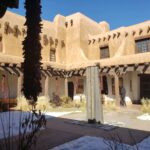
-
With over 300 days of sun, chilis dry easily by braiding them into ristras.
-
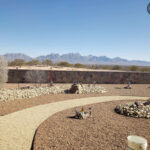
-
Xeriscaping saves precious water
-
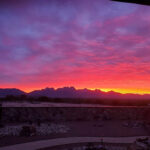
-
The wide horizon reveals brilliant sunrises.
We enjoyed seeing the mountains, including snow-capped ones. Some hikes we took on our way to Las Cruces, NM, included the Valley of Fires lava beds, petroglyphs, and White Sands. All in winter coats. Our brother and his wife hosted us for several days in a comfy setting. Again, we bundled up in winter coats and wraps on our walks, hikes, and trips to the store. Lows at night were in the high teens or low 20s. This was less than an hour from the Mexican border! Winter coats and wraps are cumbersome but better than frostbite. One bonus — no mosquitos, ticks, rattlesnakes, or scorpions! We had only one overcast day and it snowed. So most days we applied sunscreen to our faces; this part of the country has an average of over 325 sunny days per year.
-
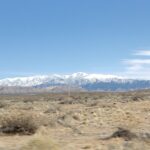
-
Snow-covered peaks
-
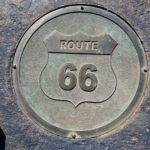
-
Traveling the iconic Route 66.
-
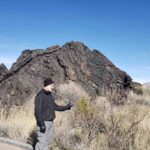
-
Valley of Fires Recreation site in New Mexico
-
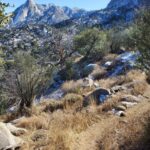
-
Shaped like organs pipes
Wind!
For several days we had high wind warnings. When we finally drove north to Santa Fe, NM, for a few days of culture, history, and adobe architecture, the wind was so strong that we dodged huge tumbleweeds racing across the highway. Whoever was driving would gasp as some, three feet in diameter, even whacked the car. These were not lightweight, stripped-down, bleached tumbleweeds floating across the road. They were full, sturdy balls of Russian thistle whizzing full speed. The wind certainly also cut our gas mileage while we headed west. Our gas mileage was better when we headed back east but the wind wasn’t as strong those days.
Cold Culture
At 7,199 feet above sea level, Santa Fe is the highest elevation state capital. It was cold! One morning we woke to 10 degrees. Needless to say, no camping. The casita where we stayed just a half-mile from downtown had a fully-equipped kitchen, so we were able to cook meals and take breaks between walks to and from the Plaza area with all the museums and historical buildings. Our coats and wraps kept us warm.
-
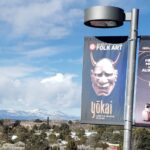
-
Santa Fe boasts intriguing museums.
-
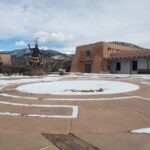
-
Museum of International Folk Art.
-
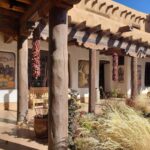
-
Classic architecture.
Keeping an Eye on the Weather
As we readied to head home, weather predictions showed a major winter storm brewing over the Great Plains and ready to plunge into the Upper Midwest. So, winter in America means watching the weather and plotting a safe course of travel, which we did. Staying south and east to avoid serious wind chill warnings, we arrived home a half-hour after the first snow of that storm sifted down. We had expected to have to stay another night in a motel but we slept in our bed that night. Phew!
So, short days, cold, wind, and storms. We will think twice before planning another January Road trip.























